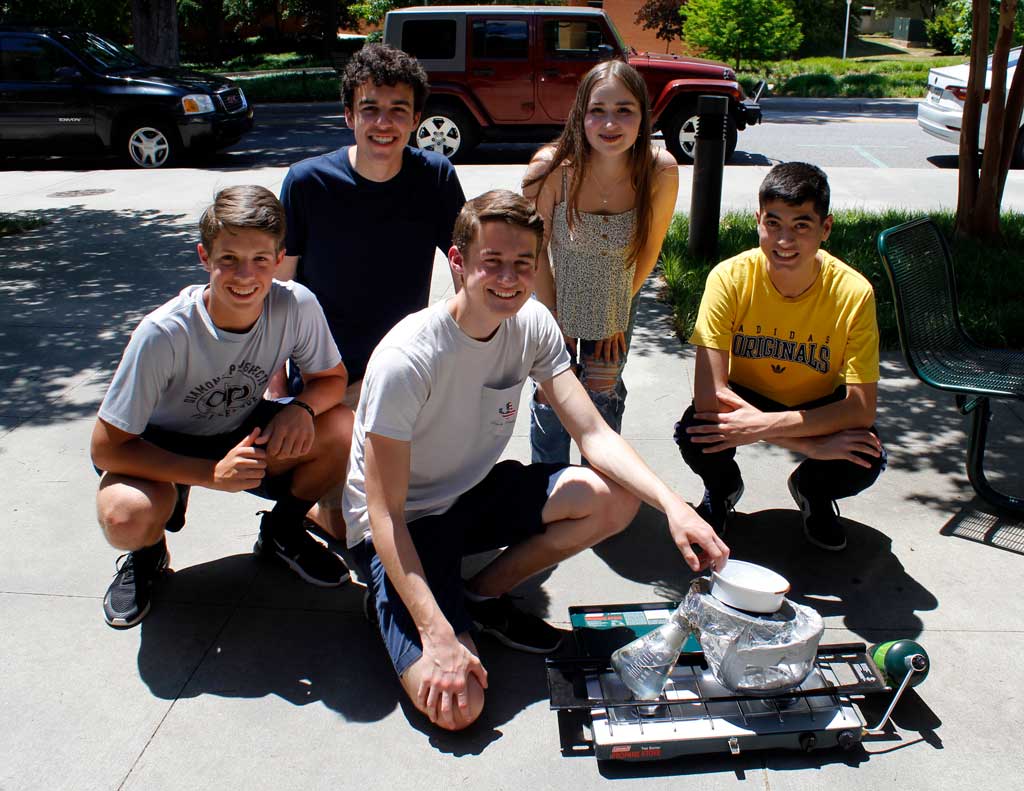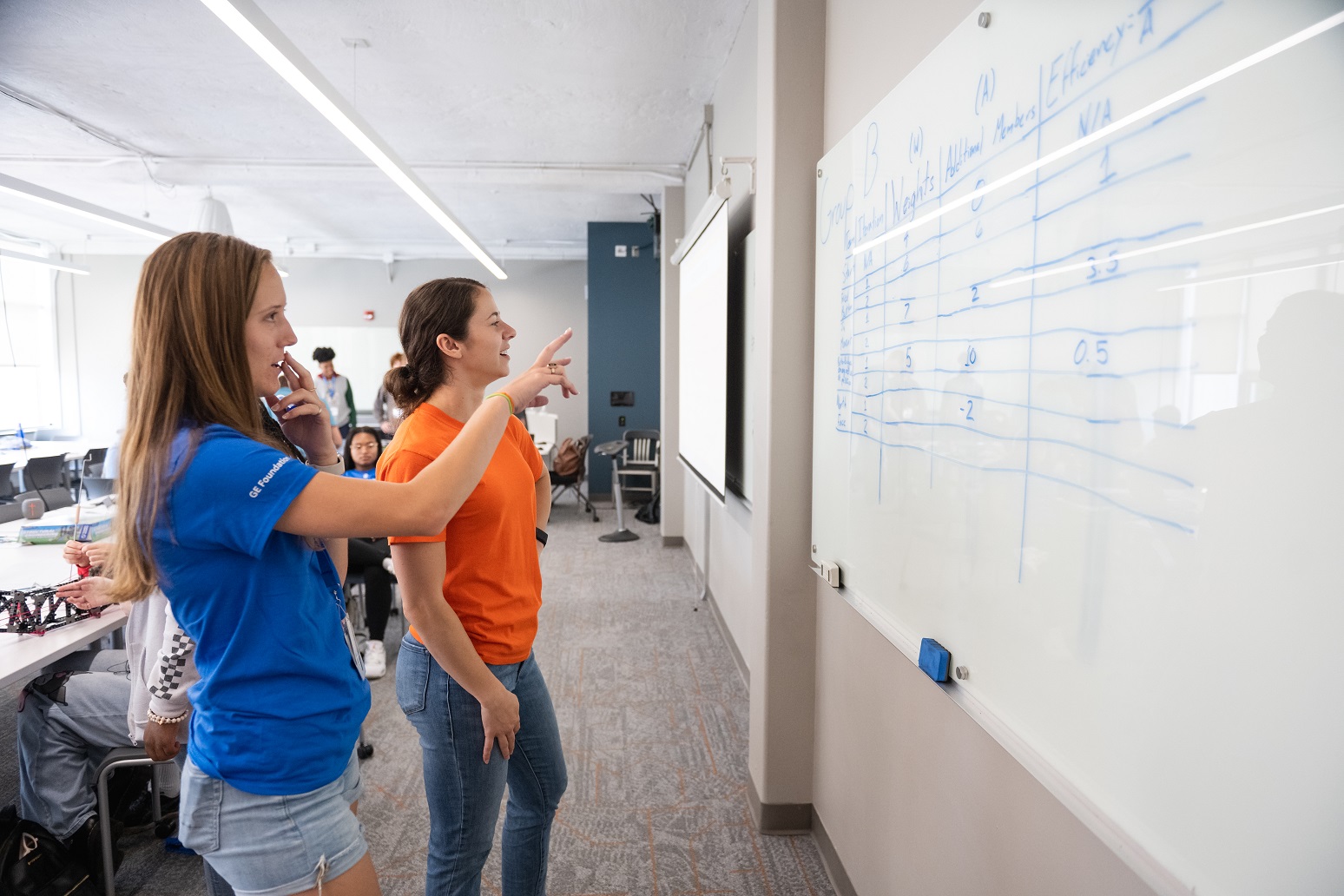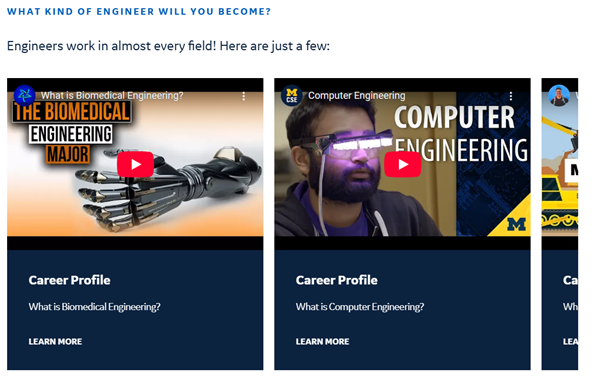Engineering is a well-respected, in-demand field in the United States, with many ways to enter—such as technical schools, community colleges, universities, or apprenticeships.
From 2023 to 2033, engineering jobs are expected to grow faster than the average for all careers, with about 195,000 openings each year.
Engineers work in many industries—from consulting and technology to biotechnology, energy, and aerospace—at companies like GE Vernova, GE Aerospace, LJA Engineering, Apple, Johnson & Johnson, Merck and many more.
Use this page to explore your career options, and think about which educational path might be the best fit for you. We encourage students and trusted adults to discuss your findings and plan your next steps together.
According to the U.S. Bureau of Labor Statistics (BLS) in May 2023, engineers had a median annual wage of $91,420.
According to the National Council of Examiners for Engineering and Surveying, (NCEES) there were 931,640 Professional Engineer licenses in the U.S. as of 2022.
According to the U.S. BLS, Industrial Engineering is expected to be one of the fastest-growing fields of engineering over the next 10 years.
Step 1: Explore Your Goals and Interests
The first step in pursuing any career is to start with yourself. Taking some time to clarify what you like and what’s important to you in a career will make it easier to create a path that is just right for you.
Use our Goals and Interests tool to help you start your journey. It will guide your thinking through these important questions. Tip: the WEB versions are easier to use on a larger screen, such as a tablet or laptop, rather than a phone. You can also save a copy so that you can fill it out and share with an adult.
You can either download and print it, or fill it out online:
After working through the tool, do you feel like you have a better sense of:
Your values, the things that are most important to you?
Your interests, the things that you most enjoy doing?
Your skills and aptitudes, the things you are best suited to doing?
Your life and career goals, the things you most want to accomplish in the future?
It's not unusual for these things to change as you keep exploring your career pathways. Come back and use the tool again at any time!
Step 2: Explore Engineering Careers
Once you have identified your values, interests, skills, and goals, the next step is to learn more about engineering fields where you can express your values, apply your interests and skills, and achieve your goals.
Read more about different Engineering Disciplines or explore some of the exciting fields here.
Now that you’ve investigated some engineering fields, what are the top three fields you would like to explore further? You can always return to this step if you change your mind later, or when you learn about a new field.
Step 3: Explore Educational Pathways
Did you know that becoming a “professional engineer” is not the only career option? You can also become an engineering technician or engineering technologist in many different fields. While professional engineers often focus on design, systems thinking, and analysis, technicians and technologists work alongside professional engineers, focusing on practical applications such as building, maintaining and repairing technical systems.
Each of these careers has different educational paths with different steps and requirements along the way. Use our Interactive Educational Paths tool to explore these paths in more detail to find which ones are best for you.
Now that you have explored some of the education paths and engineering careers available to you, which one do you think is best suited to your interests, skills, and career goals? Return to this step at any time to explore further!
Step 4: Explore Educational Institutions
Whether it’s a 4-year university, technical college, community college, or an apprenticeship, finding the right opportunity after high school that fits your interests and goals is important. Post-secondary study can also be expensive! Therefore, you may need to take some time to find and access financial support.
Use our Find Your Fit tool to help you to research, evaluate, and compare different institutions and their offerings, as well as find different sources of funding available to you. Tip: it may be easier to view the web version on a larger screen. We also recommend saving a copy to fill out and share.
After working through the tool, do you feel like you have a better sense of:
What kinds of post-secondary institutions there are?
How to compare and evaluate what these different institutions offer?
How to determine if an institution would be a good fit for you and your career goals?
How to secure the funding you might need to support your studies?
It's common for your preferences to change as you keep exploring your career pathways. So, come back and use the tool again at any time!
Step 5: Explore Your Next Steps
It’s never too early to start your career journey by taking advantage of STEM and engineering opportunities in your city. Here are some of the things you can do now to get started:
Check with local universities and colleges to see if they offer STEM or engineering camps or clubs you can attend.
These national engineering organizations may have regional or local student chapters in your city. Take a look at upcoming events with:
SWENext: Society for Women Engineers SWENext program is open to all students ages 5-18.
FIRST: a global non-profit provides young people with team-based robotics challenges and competitions. Find local FIRST communities in your area.
NSBE Jr, SHPE Junior, oSTEM, and more: The National Society for Black Engineers, the Society for Hispanic Professional Engineers, and Out in STEM all offer a variety of opportunities and experiences for high school students looking to learn more about engineering and STEM careers, including mentorship, hands-on activities, and scholarships. There are many other professional societies, so we encourage you to look for one that suits you!
Find a STEM or Robotics Club in your school or community - check out K12 or a college or university near you for more resources, events, and ideas.
Ask your school counselor or teachers if they know of any engineering career exploration opportunities like career fairs or job shadowing opportunities.
Meet with your school counselor/advisor or teachers to review and select appropriate courses to make sure you are eligible to apply to the institution of your choice.
If you have one or more institutions in mind, enquire if they have any open days or other opportunities to visit and tour the campus (either on-site or virtually).
Talk to or hear from a real engineer. Ask family or friends to help connect you or use online resource such as YouTube, Crash Course, and podcasts to learn more.
If you have made some decisions about where you want to go after high school, get started on your applications!












